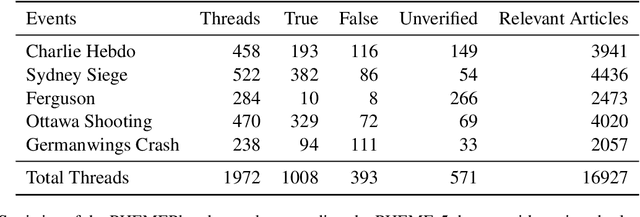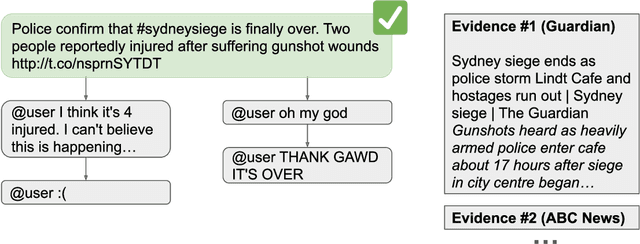John Dougrez-Lewis
Assessing the Reasoning Abilities of ChatGPT in the Context of Claim Verification
Feb 16, 2024Abstract:The reasoning capabilities of LLMs are currently hotly debated. We examine the issue from the perspective of claim/rumour verification. We propose the first logical reasoning framework designed to break down any claim or rumor paired with evidence into the atomic reasoning steps necessary for verification. Based on our framework, we curate two annotated collections of such claim/evidence pairs: a synthetic dataset from Wikipedia and a real-world set stemming from rumours circulating on Twitter. We use them to evaluate the reasoning capabilities of GPT-3.5-Turbo and GPT-4 (hereinafter referred to as ChatGPT) within the context of our framework, providing a thorough analysis. Our results show that ChatGPT struggles in abductive reasoning, although this can be somewhat mitigated by using manual Chain of Thought (CoT) as opposed to Zero Shot (ZS) and ZS CoT approaches. Our study contributes to the growing body of research suggesting that ChatGPT's reasoning processes are unlikely to mirror human-like reasoning, and that LLMs need to be more rigorously evaluated in order to distinguish between hype and actual capabilities, especially in high stake real-world tasks such as claim verification.
PHEMEPlus: Enriching Social Media Rumour Verification with External Evidence
Jul 28, 2022



Abstract:Work on social media rumour verification utilises signals from posts, their propagation and users involved. Other lines of work target identifying and fact-checking claims based on information from Wikipedia, or trustworthy news articles without considering social media context. However works combining the information from social media with external evidence from the wider web are lacking. To facilitate research in this direction, we release a novel dataset, PHEMEPlus, an extension of the PHEME benchmark, which contains social media conversations as well as relevant external evidence for each rumour. We demonstrate the effectiveness of incorporating such evidence in improving rumour verification models. Additionally, as part of the evidence collection, we evaluate various ways of query formulation to identify the most effective method.
 Add to Chrome
Add to Chrome Add to Firefox
Add to Firefox Add to Edge
Add to Edge